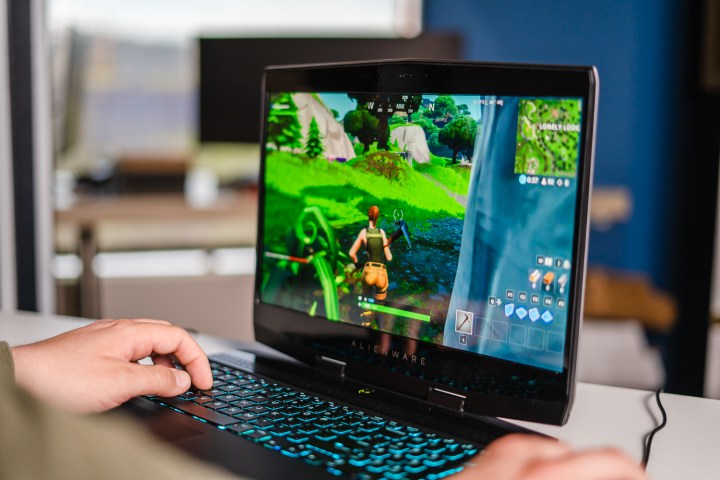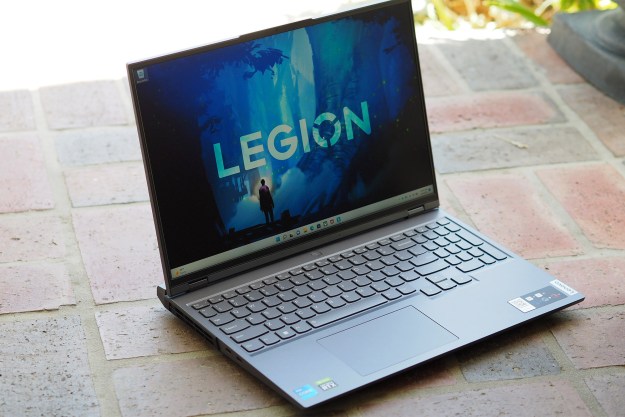
OLED laptops are making a comeback in 2019. Manufacturers are actually selling them. We’re seeing OLED in everything from the Dell XPS 15 and HP Spectre x360 15 to gaming laptops like the Razer Blade and Alienware m15.
But, are people interested in these expensive
First observations
All the 15-inch OLED displays available in 2019 come from the same source. Samsung. So, whether you choose the Alienware m15 or the ThinkPad X1 Extreme, you’re buying the same basic panel.
The screen is glossy, bouncing reflections like crazy. I measured it at an insane 570 nits, making it the brightest laptop screen we’ve ever tested. It’s brighter than a MacBook Pro — brighter even than the Surface Studio 2. But Alienware ships its laptop with a black wallpaper defaulted, and even at max brightness, I saw my reflection looking back at me.
When talking about OLED, “black level” isn’t really an appropriate turn of phrase. Because the individual pixels can turn off entirely, it gives the impression that you aren’t looking at a screen at all. The icons popped right off the black wallpaper like they were floating in the dark. The ability to produce a deep black is the biggest single factor in image quality. It’s what makes colors dazzle and come to life. That’s as true of browsing the web as it is in playing a game.

The color palette of Fortnite bursts with new energy on an OLED screen. The grass looks more lively and the clouds hover in the sky with an apocalyptic vibe. Fortnite has never been so beautiful. Better still, OLED’s boon doesn’t depend on the resolution or graphics settings you choose. The latest OLED screens are all
Alienware’s take on OLED is tuned to exaggerate. Color accuracy is thrown out the window at the expense of making the visuals more attractive at a glance. This is not a screen you’ll want to use for editing photos or video. Fortunately, the OLED on other
No one’s doubting that gaming in OLED looks better. But, does it play better? After all, the real advantage in gaming has to be a performance benefit, and for OLED, that’s where limitations appear.
Is there a difference in gaming?
OLED panels might reduce response times. That’s good. If the response of a key press or joystick click is seamless, gameplay will feel smoother and more responsive.
Input lag is a common problem for console gaming. There are all sorts of elements that factor into the equation of overall input lag, but OLED technology removes the delay required in any backlighting system entirely. Pixels flick on or off instantaneously.
So, was that lower input lag noticeable on this Alienware’s OLED screen? For some comparison, I cracked open another new laptop — the Razer Blade 15 with its 240Hz refresh rate. Both companies offer
The difference isn’t as obvious as I’d hoped. Input lag on a device like a laptop is already low. You’ll notice slightly less streaking and blur in motion on OLED, but only if you’re paying close attention. Meanwhile, the difference a higher refresh rate makes is immediately beneficial, especially in a fast-paced game like Fornite. That was even more true when I knocked the graphics settings back to medium and pushed framerates up to 120 FPS.
Now that is smooth gameplay.
As of now, OLED is only offered in
Its time will come

While OLED might not be a great solution yet for most gamers, there are other reasons to be interested in these devices.
Everything you view on an OLED laptop looks vivid — whether that’s surfing the web, watching a Netflix series, or just browsing through YouTube videos. Put the LED XPS 15 next to the OLED, and I know which one I’d pick every time, even if I’m just staring at colorful wallpaper. Dell is even selling them at the same price, the only difference being touchscreen capability. That doesn’t mean they’re cheap, but then again, 4K laptops have never been affordable.
The other target demographic for OLED is content creators, and they’ll benefit most from the upgrade. For them, image quality isn’t just a matter of enjoyment. It affects the quality of their work. For example, the HP Spectre x360 comes with 10-bit color support, so full-featured
Being able to edit photos and videos with that level of detail is important, since many smartphones and televisions already use OLED panels.
Editors' Recommendations
- The real reason so many laptops have moved to soldered RAM
- 2 gaming laptops you should buy instead of the Razer Blade
- It’s the right time to buy an older gaming laptop
- Alienware’s new second-gen QD-OLED monitors are stunning
- This is a first for Alienware gaming laptops




